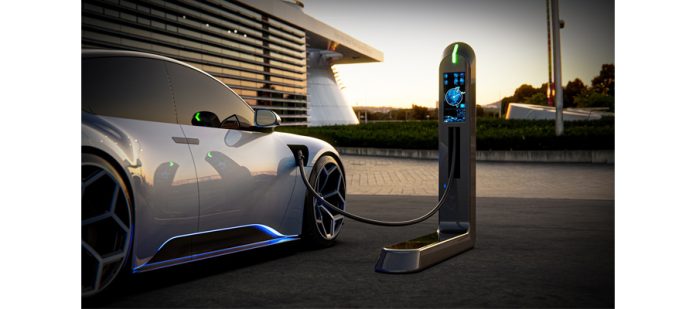DAVID SCHELLENBERGER, Marketing Manager, Microchip Technology
Solve Design Challenges for EV Charging Infrastructure
The increasing number of Electric Vehicles (EVs) on our highways will require a massive acceleration in the rollout of charging infrastructure to support them, creating significant opportunities for original equipment manufacturers (OEMs) of this equipment. However, when it comes to EV charging, one size does not fit all. Charging station designers must consider if the AC power delivered to the station will be converted to DC or remain AC power and whether or not the station is for home or commercial use. They must also consider the type of interface, monitoring and communication capabilities required for the location. This blog post reviews some of these functions and shows how Microchip’s comprehensive system solutions, incorporating a broad portfolio of hardware, software and advanced materials, can help OEMs quickly solve their challenges when designing effective and reliable charging stations.

Home Charging Stations
Level 1 AC home chargers, often called Electric Vehicle Supply Equipment (EVSE), operate from a 120V (US) or 240V (Europe and China) supply and draw currents up to 15A. Due to the lower voltage and current levels, their maximum power is less than 2 kW, meaning charging takes longer. The main advantages of level 1 chargers are that they operate from readily available domestic outlets and are inexpensive.
Level 2 AC home chargers operate from 208 to 240V, drawing currents up to 80A (but typically 32A) from a dedicated circuit for a power rating of 7 kW. The main advantage of level 2 chargers is decreased charge time, allowing an EV to charge to 100% capacity overnight.
Commercial Charging Stations
Commercial or public AC chargers are similar to level 2 home chargers but support higher charging currents (up to 50A). In addition, they support payment options such as RFID cards, credit cards and other options like ISO15118 plug and charge. AC commercial chargers often include remote management capability via Open Charge Point Protocol (OCPP) protocols. They are also more likely to have a large integrated touchscreen to display information like payment options, metering other and charger-related information.
DC Fast Charging Stations
Level 3 DC fast chargers bypass the onboard charger in an EV to charge a battery directly using a battery management system. This approach enables significantly higher charge rates, with output power levels typically ranging from 50 to 350 kW in this type of charger. Common output voltages are 400–800V, with newer EVs trending towards 800V batteries. Since Level 3 DC fast chargers must convert three-phase AC voltage to DC, they include an AC-DC power factor correction front-end with an isolated DC-DC converter to interface the PFC output to the EV’s battery. In addition, multiple power modules are often connected in parallel to achieve higher output power. The main benefit of DC fast chargers is significantly reduced charging time, taking only 30-45 minutes to charge the battery in an EV fully.
Wireless Charging
Wireless systems, based on inductive technology and capable of delivering several kW, will become an increasingly more prominent part of the EV charging landscape, bringing the advantage of eliminating expensive cabling and more flexible installation options.
Additional Functionality for Effective EV Charging Stations
Besides delivering power to an EV’s battery, practical EV charging stations require supporting functions. Some of these include:
- Human machine interface (HMI): Charging stations require a display to allow users to make payments and select charging options.
- Security: The popularity of EVs is growing, but so is the number of cyber threats. Vulnerabilities in EV charging stations, including a lack of encryption and user authentication, make them prone to attack from hackers seeking to steal confidential payment information from users.
- Connectivity: Charging stations require communication connectivity, and depending on the location, this can be wired or wireless.

Microchip’s Comprehensive System Solutions Simplify EV Charger Design for OEMs
Microchip is ideally placed to provide total system solutions to OEMs designing EV chargers, offering a “one-stop shop” of required components to assist with hardware and software integration. This includes silicon carbide devices (SiC) power devices for power transfer, dsPIC® digital signal controllers for digital power control, maXTouch® technology for charging station displays, secure elements for payment security and Ethernet solutions for connectivity. We can also provide application support and guidelines for design pre-certification. By harnessing our compelling offering of industry-leading components, systems-level solutions and proven expertise, OEMs can bring EV charging equipment to the market much more quickly than by going it alone.








